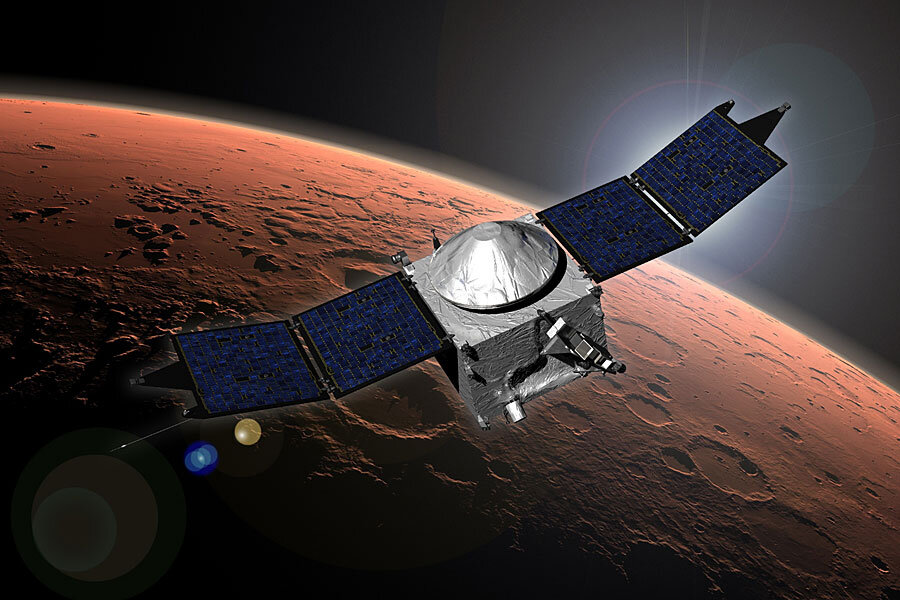NASA orbiter detects ultraviolet auroras on Mars
Loading...
Just a day after skywatchers at mid- to upper-latitudes around the world were treated to a particularly energetic display of auroras on the night of March 17 as a result of an intense geomagnetic storm, researchers announced findings from NASA’s MAVEN mission of auroral action observed on Mars – although in energetic ultraviolet wavelengths rather than visible light.
Detected by MAVEN’s Imaging Ultraviolet Spectrograph (IUVS) instrument over five days before Dec. 25, 2014, the ultraviolet auroras have been nicknamed Mars’ “Christmas lights.” They were observed across the planet’s mid-northern latitudes and are the result of Mars’ atmosphere interacting directly with the solar wind.
While auroras on Earth typically occur at altitudes of 80 to 300 kilometers (50 to 200 miles) and occasionally even higher, Mars’ atmospheric displays were found to be much lower, indicating higher levels of energy.
“What’s especially surprising about the aurora we saw is how deep in the atmosphere it occurs – much deeper than at Earth or elsewhere on Mars,” said Arnaud Stiepen, IUVS team member at the University of Colorado. “The electrons producing it must be really energetic.”
To a human observer on Mars the light show probably wouldn’t be very dramatic, though. Without abundant amounts of oxygen and nitrogen in its thin atmosphere a Martian aurora would be a dim blue glow at best, if not out of the visible spectrum entirely.
This isn’t the first time auroras have been spotted on Mars; observations with ESA’s Mars Express in 2004 were actually the first detections of the phenomenon on the Red Planet. Made with the spacecraft’s SPICAM ultraviolet spectrometer, the observations showed that Mars’ auroras are unlike those found anywhere else in the Solar System in that they are generated by particle interactions with very localized magnetic field emissions, rather than a globally-generated one (like Earth’s).
(So no, it’s not a total surprise… but it’s still very cool!)
In addition to auroras MAVEN also detected diffuse but widespread dust clouds located surprisingly high in the Martian atmosphere. It’s not yet understood what process is delivering dust so high – 150-300 kilometers up (93-186 miles) – or if it is a permanent or temporary feature.
Read more in the MAVEN news release here.
Source: NASA and Nature
==
A graphic designer in Rhode Island, Jason Major writes about space exploration on his blog Lights In The Dark, Discovery News, and on Universe Today. Ad astra!
Originally published on Universe Today





